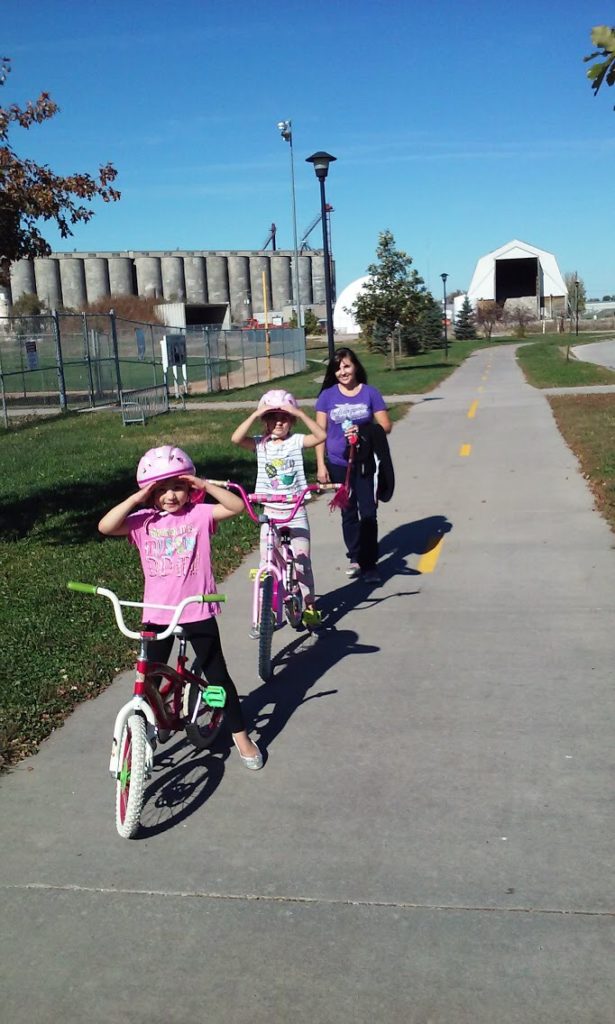Have you ever been unlocking and packing up after work or a stop, ready to get rolling on your way when a voice says “ I could never do that” you turn around and they’re staring at you and your bike. You say “ why not?” They can’t answer. For most people who commute and do errands by bike I’d venture that this is not an uncommon scenario. Why do people think it’s so out of reach? They’ll ask how far the ride is. Anything over a mile seems to overwhelm them. But why? It may be that they haven’t ridden a bike since they were a kid. Those that rode a lot as children seem to consider it more doable once they think about it. I explain that the challenge may be more mental than physical. Others are terrified of riding in the street. I explain that the route one drives in a car is probably not the same way one would take on a bike, though some destinations really are too dangerous to get to by bike. Also, many parents won’t let their children ride their bikes to school because they feel it’s not safe. Of course others say that they could never arrive at work sweaty, or that there’s no where to lock up their bike, either at work or home -not an unfounded concern. The relatively recent arrival of e-bikes on the scene is making those who don’t believe they are fit enough or who don’t want to arrive sweaty reconsider commuting by bike.

Such are some of the barriers to commuting by bike in Lincoln, assuming that the person interested has access to a bicycle. What about other places in the world? The winners of the $1,000,000. prize for sustainable city transport were just announced. Nine other cities received $400.000. each. 275 cities from 66 cities submitted entries. Fortaleza Brazil won top honors with a plan for 110 miles of protected bike paths. The focus was on promoting biking for children, older adults and cargo bike deliveries. Lisbon, Portugal plans to connect 20,000 schoolchildren with their schools by protected bike lane, and Milan, Italy will connect 40 schools via a radial network of protected bike paths.
The money is being donated by Bloomberg Philanthropies. James Anderson, who leads their government innovation program says that “Demand and interest in urban cycling is skyrocketing”. “The need to offer residents more sustainable mobility options is also urgent and critical. But we all know that city infrastructure has not kept pace”.
“We haven’t seen the level of innovation, we haven’t seen the level of ambition that the moment demands.”
The judges, he said, were not just looking for plans with coherent networks, but ideas that engaged with local communities, particularly ones seen as traditionally hard to reach for active travel schemes, such as Wellington’s focus on the city’s Māori population.
“There’s a recognition now in city halls everywhere that expertise comes from lots of places, and a lot of it comes from the community,” he said.
“If you want people in communities that have not typically participated in some of the sustainable mobility options, you need to go there and you need to work with them, need to get their thoughts on how to make cycling infrastructure useful in their day-to-day lives.”
